Native American Gender Roles and Spanish Colonialism
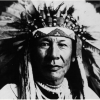
This lesson explores culture, oppression, and colonialism by exploring Native American gender roles and how they differed from Spanish gender roles.

Instructional Resources for California Educators, Students, & Families

This lesson explores culture, oppression, and colonialism by exploring Native American gender roles and how they differed from Spanish gender roles.
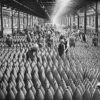
While the battles of World War I primarily took part in Europe, the effects of the war reached around the world. Men, women, and children experienced the consequences of the conflict. Men volunteered or were conscripted into the military to fight on the battlefields. The success of each side’s military required not only manpower, but weapons, food, and supplies. These materials had to be produced at home or in the colonies, which required women to take on duties that were not considered feminine roles, such as working in factories and farming. Because entire societies were mobilized to support the war effort, World War I is considered a total war.
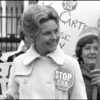
In this lesson, students will learn about changes and continuities in the 1920s, particularly focused on cultural and social areas. Students will analyze primary and secondary sources that explore race, gender, and sexuality in the 1920s.
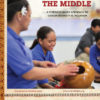
A Place in the Middle is the true story of Ho'onani, a remarkable eleven year old girl who dreams of leading the hula troupe at her inner-city Honolulu school. The only trouble is that the group is just for boys. She's fortunate that her teacher understands first-hand what it's like to be “in the middle” - the Native Hawaiian tradition of embracing both male and female spirit. As student and teacher prepare for a climactic end-of-year performance, together they set out to prove that what matters most is what’s inside a person’s heart and mind.
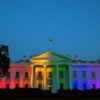
On June 26, 2015, in a 5-4 decision the Supreme Court of the United States held that the 14th Amendment requires a state to license a marriage between two people of the same sex and to recognize marriages lawfully performed in other jurisdictions. This means that marriage equality is now the law of the land in all 50 states. Prior to this historic day, 37 states plus the District of Columbia had legalized marriage for same-sex couples. This lesson provides an opportunity for students to explore marriage equality, gain background information about it, and reflect on their own thoughts and feelings about marriage equality.

In this two-part lesson, students will carry out and reflect upon an interview with a parent, grandparent or guardian to acquire a deeper insight into gender roles in the past. Students will compare and contrast, through the lens of gender, the work and dress expected of them and their immediate families today to that of their grandparents, parents or guardians when they were children.
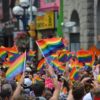
This is Part 1 of the 2-part Pride Parade for LGBTQ+ Families lesson plan. It can be used as a standalone. Students will examine the relationship of modern-day families to the history of their community through exploring the importance of Pride for LGBTQ+ families. This is a two-part lesson in which students will engage with the storybook ‘This Day in June’, which welcomes readers to experience a Pride celebration, and therefore (1) examine the origins of Pride- the Stonewall Riots, and (2) discuss the struggle for Marriage Equality in the United States.
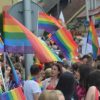
This is Part 2 of the 2-part Pride Parade for LGBTQ+ Families lesson plan. It can be used as a standalone. Students will examine the relationship of modern-day families to the history of their community through exploring the importance of Pride for LGBTQ+ families. This is a two-part lesson in which students will engage with the storybook “This Day in June,” which welcomes readers to experience a Pride celebration, and therefore (1) examine the origins of Pride- the Stonewall Riots, and (2) discuss the struggle for Marriage Equality in the United States.